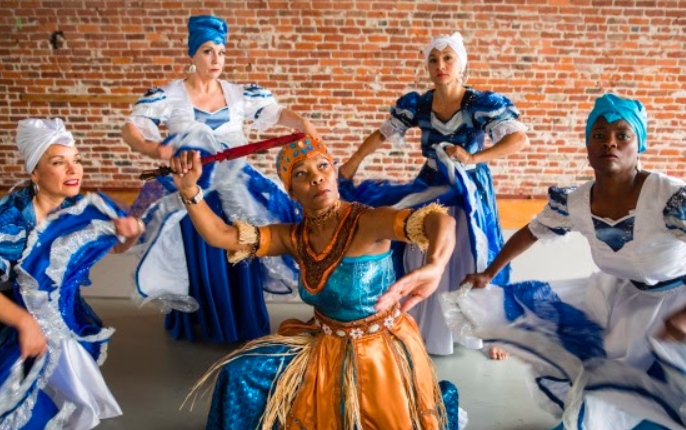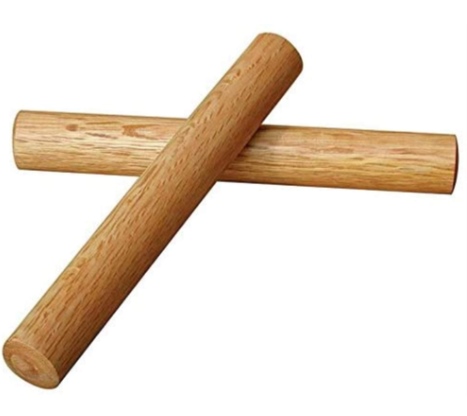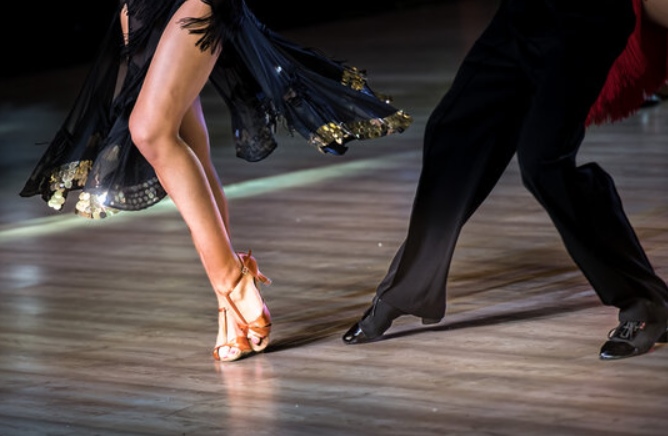Internationally recognized for its Latin music and sensual moves, the Rumba dance is called “the dance of love”. Although its popularity was associated with Cuba, its origin and development is quite an eventful story.
The romantic songs and amorous interactions between the dancers are only the surface of what this dance holds inside itself.
Table of Contents
Rumba Dance Origin & History
The Origins
In the 16th century, Spanish settlers arrived in Cuba and brought African slaves with them. The number of enslaved Africans increased significantly in the transition between the 18th and 19th centuries along with the sugar export industry.
Africans gathered in large populations near the sugar plantations and preserved important cultural traditions, which eventually became a heavy influence on Cuba, especially on the western side.
In this area, what we now call Afro-Cuban culture was born from consistent and long-term interaction of European and African folks. The scholars call it “The Cuban transculturation”, wherein a massive part of Spanish culture was melded with the African lifestyle here.
In the poor neighborhoods near the dock of Havana and Matanzas, the roots of Rumba and imperative Rumba figures were born and raised in large houses called Solares or cuarterias. “Rumba” stemmed from “rumbear”, a Spanish verb meaning to party and have a great time.
The earliest traces of the urban Rumba style led us to the slave barracks of the 1900s when the name Rumba was still an unconceived concept.
During this era, household items and utensils were in use instead of instruments. Sticks, spoons, and frying pans rather than claves, palitos, and guaguas; drawers and boxers rather than congas drums.
The Rumba styles in the next decades were better recorded and studied. We get to know the roots of urban Rumba were orfeones, the origin of street choirs. The dance moves and the percussion instruments were borrowed from the Yuka dance and music.
Rumba’s syncretic essence was further asserted by the addition of the Abakuá secret traditions.
Early Records
The primary purpose of Rumba was a racial and social identity that the oppressed were searching for. Through this combination of poetry, music, and dance, old and new traditions can simultaneously exist and evolve.
The first stage for Rumba performances was the backyards and streets of urban areas. More than common social circumstances and risky rebellion, Rumba was a disguise serving both goals, temporarily relieving the enslaved from suffocating oppression.
In the 1940 – 1960 period, there were a few commercial recordings of Rumba music, and the success of “El Vive bien” set the foundation step for popular Rumba groups and bands, who received positive feedback for being innovative and unique.
However, even after the abolishment of slavery, inequality still existed, and Rumba became a means for people to let their frustration out.
Despite how often it was practiced, the limited financial ability of Afro-Cubans didn’t allow many opportunities to be popularized until the Cuban Revolution institutionalized it in 1959.

Post-revolution
After the Revolution, the attempts to institutionalize Rumba ended up creating two versions of Rumba.
The first type was the traditional performance among family and friends and in the backyard. The second type was modified by the government and showcased in theaters for tourists.
The versions were respectively backed up by the Ministry of Culture and the Cuban Nacional Folkloric Company, with the latter being more prevalent. The company shifted Rumba from the streets to the professional stages, but the Ministry succeeded in organizing street Rumba.
As you can imagine, the street Rumba could be a problem if performed spontaneously, because it attracted too much attention and led to severe traffic issues, not to mention people drinking, getting drunk, and fighting.
The Ministry resolved this urgent matter by restricting where people could gather and enjoy Rumba.
This policy also saved Rumba from a bad reputation. Nonetheless, one could say the discipline kind of went against the spontaneous nature of Rumba and negatively affected the inspiration for it.
Another perspective considered this era as the beginning of Rumba that was manipulated. So many aspects were made specific: duration, visual, dance form, and more. Elaboration and personalization are not a choice for them.
Professionals acknowledged the theatrical Rumba as the more stylized version and the folkloric Rumba as an atmosphere instead of a genre, hence it was impossible to have only one Rumba style. In fact, the informal, traditional Rumba is still pervasive no matter what.
Modernized Rumba
In the 80s, the Rumba ensemble Los Muñequitos de Matanzas gave the drum parameters an immense expansion and ignited a new rush of creativity, leading to the grand Rumba modernization.
With no confinement in rhythms and melodies, Rumba music became more of a synchronization and less than an obvious combination of separate segments. Two popular examples of this improvement are batá rumba and guarapachangueo.
Batá rumba was guaguancó plus chachalokuafún at first, yet it was expanded and now included batá rhythms as an indispensable part.
Guarapachangueo by Los Chinitos was highly conversational, a far cry from the standard rhythms in popular recordings. If you are unfamiliar with beats, you might find it unorganized, though a trained ear would easily spot the synced percussion here.
Influence and Legacy
The Cuban Minister of Culture once stated that Cuba and Rumba would be incomplete without each other, and so many Cuban people see Rumba as a whole lifestyle.
Beyond the borderline of Cuba, Rumba has influenced the entire Latin American region, inspiring a plethora of dance styles such as salsa, Afro-Cuban jazz, and ballroom rumba.
For a quite complicated dance regarding techniques, Rumba has an extremely important position in a whole country’s culture.
Most Cubans see it as fundamentally and thoroughly theirs, and they want the world to have the same view of Rumba as they do: authentic, vibrant, and joyful.
Rumba Today
The most common form of modern Rumba is ballroom rumba, which is internationally popular and also included in the competitive scene by the International Olympic Committee and the World Dancesport Federation.
In international contests, Rumba is categorized as a Latin dance by default, but a rhythm dance in American competitions. The steps and the counts for these two styles are distinct from each other.
However, being part of competitions doesn’t mean Rumba is no longer part of the social scene. It is a great introduction to Latin dances for newbies because of its slow pace, and it is very popular as the first dance at wedding parties.
Check more: Ballroom Dance: History, Types, Costumes & More
Rumba Dance Styles
With how widespread Rumba is, variations and subgenres are inevitable. Three of the most influential styles of Rumba are Guaguancó, Yambú, and Columbia.
Guaguancó
Of all Rumba’s subgenres, Guaguancó is the most well-known and influential. As it derived from Yambú, it inherited a lot of traits from its predecessor yet adopted a quick tempo.
The name Guaguancó comes from a narrative style in songs. These songs might have a close bond with the guagua instrument. This aspect is presented quite often in corresponding tunes and lyrics.
Guaguancó symbolizes the sexual tension between a couple. Hence, it feels quite sensual and contains erotic moves called vacunao.
The male dancer will thrust his hips as a demonstration of sexual intercourse.
The female will lift and close her skirt while her upper body performs a seductive motion opposite to the lower torso. At the same time, the male uses fancy dance steps to distract her and gradually gets himself in a great position to do the vacunao.
For most of the dance, the male wouldn’t succeed in “catching” the woman right away because she would turn in another direction or cover her loins from the attack. Therefore, Guaguancó is considered positively humorous.
Yambú
Yambú might be the oldest style of Rumba that we still see today. It is also called Yambú of Spanish time because it has been existing since the Spanish colonization began.
Compared to other Rumba styles, Yambú is performed at the slowest tempo, and the nature it attempts to convey is fragility and not sensuality.
It is also not mandatorily a dance for couples. Women can dance to it as they please. There might still be some flirting, yet it doesn’t hold the sexual nuance seen in Guaguancó.
Yambú is the origin of the Quinto part that you see in Guaguancó when the moves become more accentuated.
Columbia
If you want a fast Rumba that is purely energetic rather than sensual, Columbia is a formidable candidate with its triple-pulse structure.
To explain this massive difference, researchers pointed out that Columbia started from African men who gathered and worked at the docks. Consequently, it traditionally was for males only.
A noteworthy detail about Columbia is the similarity in the drum patterns between it and Cuban Abakuá, a set of religious traditions.
The Quinto part of Columbia has alternating melodies with every new clave. In the score for this dance style, you will see different arrangements of the tone & slap elements.
Such seemingly simple derivatives surprisingly lead to a wide variety of rhythms, beats, and how the band plays.
Nonetheless, all of the liveliness of a Columbia dance wouldn’t be possible without the accompaniment, inspiration, and unavoidable competition between the Quinto player and the choreography.
Men can dance to Columbia together or competitively as a display of confidence, agility, and strength, with a touch of humor.
With more movements adopted from other local and foreign dances, Columbia Rumba has more opportunities to reach younger generations, and the proof is that we have more women doing it these days.
Rumba Dance Steps
The basic rhythm of Rumba dance is slow – quick – quick. The slow step occupies two counts. Instead of moving around, the dancers should stay in a fixed area.
The couple will start from a closed position, the male’s left (L) hand holding the female’s right (R) hand and the elbows very close but not touching.
The male’s R hand is beneath the female’s L shoulder, and the female’s L hand is behind the male’s R shoulder.
The male’s steps are as follows:
- L foot steps forward.
- R foot side-steps.
- L foot moves next to R foot.
- R footsteps backward.
- L foot side steps.
- R foot moves next to L foot.
The female’s steps are as follows:
- R foot steps backward.
- L foot side steps.
- R foot moves next to L foot.
- L foot steps forward.
- R foot side-steps.
- L foot moves next to R foot.
The turns, the hip movements, the changes of directions, or any advanced and creative attempts are up to the choreographer and the performer, but the basic steps tend to remain unchanged.
Rumba Dance Attire
In today’s Rumba, romance and sensuality are two predominant sensations in the dance.
Ladies can choose a revealing dress, though the exposure has to be sophisticated and delicate. The material should embrace your figure with flaps hanging and moving with your steps. If you go for dark colors, you might also want to have some sequins and crystals in your outfit.
The male outfit consists of a tight shirt with full-length sleeves, and leotards are often utilized for it. In contrast, the trousers feel looser, yet the waistband and the sleeves are elastic and fitting so the dancer won’t accidentally expose his legs during the performance.
Intricate details can be added to both women’s and men’s costumes, depending on the scale of the event.
The dancers should also have comfortable, lightweight, and non-slip shoes to match the outfit, which follow the general requirements.
- For women: Both pumps and sandals are acceptable, often made of leather with a closed toe. High heels are difficult to manage but more elegant, while low heels are safe for beginners but a bit clunky for professionals.
- For men: Oxfords with a flexible feel and low heels are the universal choice. They can be made of leather or nubuck, with a suede sole.
Rumba Dance Music
Rumba music is very popular itself and you might have caught the melodies somewhere. However, not everyone knows that there are many rules and forms available for Rumba songs.
Instrument
The availability and the style of the instruments contribute to the variety of Rumba music. However, you will find all types of Rumba call for certain instruments.
- Claves: Pairs of wooden sticks used for making sounds by striking against each other.
- Conga drums: Tumba or salidor is the low pitch, tres dos are the medium pitch, and Quinto is the high pitch.
- Guagua and palitos: A cylinder and a wooden stick to strike it, both are wooden.
- Shakers: Maracas and chekeré.
- Bells, cajones, güiro, and more.

In the 1940s, a shared influence took over both Rumba and Son Cubano resulting in the inclusion of new instruments: double bass, piano, trumpet, and tres, while the idiophone ones were removed.
Around this time, popular bands in Cuba started to combine their dance tracks with the original Rumba music. Some artists also did the opposite and incorporated more modern touches to the traditional Rumba and subsequently refreshed the genre.
Rhythm
Rumba is typically played in duple pulses (2/4 or 4/4) and triple pulses (9/8 or ¾), with a slight inclination towards the former. This predominance is quite evident in the Guaguancó and Yambú styles.
However, in the more rural styles, the triple pulses become the primary instead. The experts attributed this difference to the binarization of ternary rhythms of African origins.
The rhythm in Rumba music is established by claves and quinto. Based on that foundation, the rest of the instruments will support that rhythm. The guide pattern for Rumba contains five strokes and the conveyed inherent structure of it.
Songs
All Rumba songs are made up of two primary segments: Canto and Montuno.
Canto is often the stage for the lead vocalist, who plays claves and sings prolonged verses, sometimes improvising as they go. This section will end until they give the sub-vocalists the signal to join in.
Montuno is all about calls and responses by all singers in the band as they repeat the chorus, often the short refrain.
More specifically, Guaguancó and Yambú soundtracks tend to start with the vocalist singing syllables with no actual meaning instead of coherent lyrics, which is referred to as Diana.
This opening part is essential due to the choral refrain it includes, the motive, theme, or phrase the lead singer wants to introduce. Aside from being the center to build harmonies around, it also leads the audience into the world of Rumba.
After Diana, the singer can perform an improvisation of lyrics called decimar (10 lines of stanzas) or a compatible song.
Among Rumba songs, you will find some common standards such as “Lolra como lloré” & “Cuba linda, Cuba hermosa” (Guaguancó), “Ave Maria Morena” (Yambú), or “China de oro” & “A Malanga” (Columbia).
In Rumba lyrics, you might catch the phrase “negros de nación” quite often, which refers to the generation of black citizens that were set free due to the abolishment of slavery in 1886.
Final Words
As a secular Cuban music genre, Rumba dance and music became a cultural symbol of the country and the Latin American region in general.
With a wide variety of drumming styles, elaborate choreography, and vocal improvisation, Rumba is still thriving today with a great number of derivatives and minor forms, most of them revolving around the sensation of love and joy in life.


Rumba remains a favourite in Ballroom, due to the romantic and passionate nature of the dance expressed through it’s smooth and sensual style. Everyone should dance Rumba!